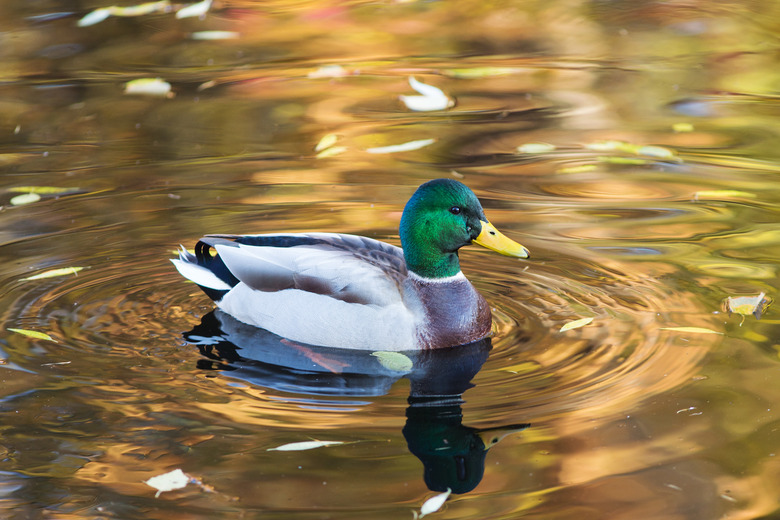How To Tell The Difference Between Male And Female Ducks
There are four principal ways to recognize duck gender: appearance, sound, internal anatomy and behavior. Generalizing is risky, because some species have more pronounced external sexual differences than do other duck species.
Duck Appearance
Duck Appearance
In many duck species, males have colorful feathers and bills whereas females exhibit duller colors. For example, male Mallards have glossy green heads, bright yellow bills and bodies of brown, gray and black. The female Mallard has an orange and brown bill and a mottled-brown body color. Male Mallards have white tail feathers and a black tail-curl that females lack. Northern Shoveler males have a white chest with chestnut flank, but the females have a brownish speckled body.
Quack Quack
Quack Quack
Female Mallards call in spurts of two to 10 quacks, but males produce a quieter, rasping call of one or two notes. Female Gadwall ducks sound similar to female Mallards, but the male Gadwall "burps" in a series of two to five short, deep calls and it also emits high whistles. Male King Eiders coo in dove-like tones, but the females add in croaks, clucks and grunts. The Cornell Lab of Ornithology website has recordings of many duck species that can help you learn the differences, if any, between male and female calls.
Sexing Young Ducklings
Sexing Young Ducklings
Farmers that raise ducks use a technique called vent sexing to separate male and female ducklings at around 12 days of age. The technique requires you to hold the duckling upside down and slowly expose the tail vent, or cloaca, with your thumb and forefinger. Females have easily observed cone-shaped genitalia, whereas male organs are longer, smaller and pointy. In addition, the male cloaca is larger than that of the female. Upon exposure, it may require a few seconds for the male organ to become visible.
Behavioral Differences
Behavioral Differences
Male ducks have a wide variety of species- and gender-specific behaviors that differ from those of their female counterparts. Male Mallards court females by bobbing their heads from one side to the other, glancing over their shoulders or flapping their wings as they raise up above the water. When confronted by another male, the Mallard will make threatening moves with an open bill and an acrobatic chase. Male Bufflehead ducks attract females by flying overhead and then skidding to a halt on the water, raising their crests and bobbing their heads.
Cite This Article
MLA
Finance, Eric Bank, MBA, MS. "How To Tell The Difference Between Male And Female Ducks" sciencing.com, https://www.sciencing.com/tell-difference-between-male-female-2278695/. 23 April 2018.
APA
Finance, Eric Bank, MBA, MS. (2018, April 23). How To Tell The Difference Between Male And Female Ducks. sciencing.com. Retrieved from https://www.sciencing.com/tell-difference-between-male-female-2278695/
Chicago
Finance, Eric Bank, MBA, MS. How To Tell The Difference Between Male And Female Ducks last modified March 24, 2022. https://www.sciencing.com/tell-difference-between-male-female-2278695/
